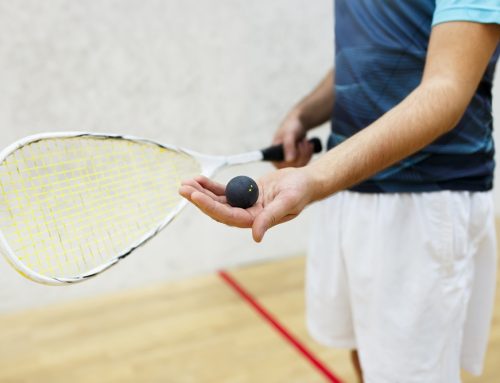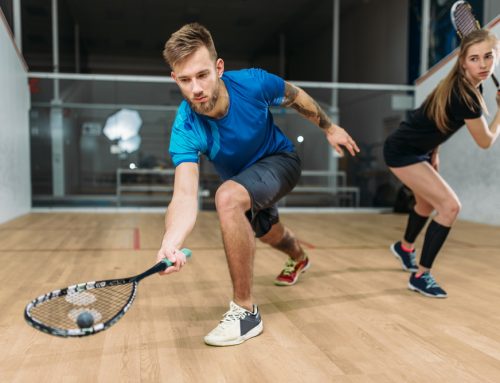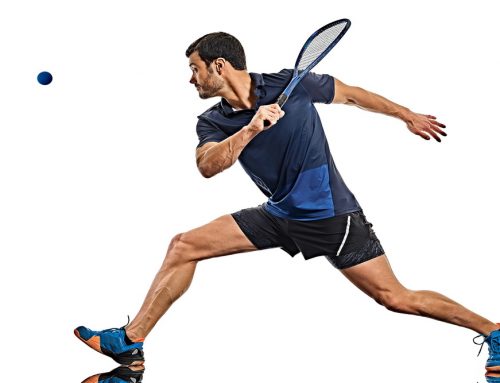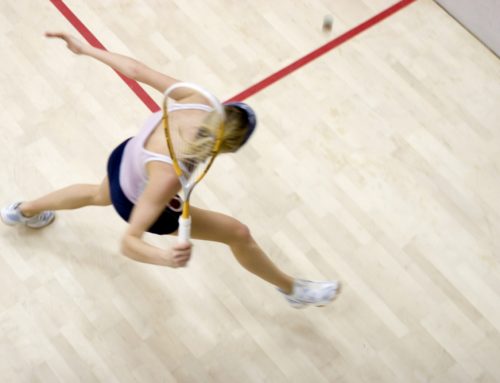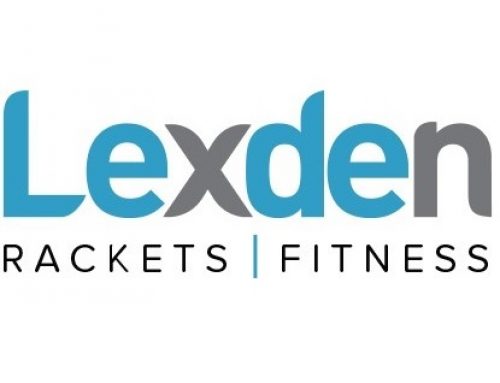Useful tips to keep your squash brain ticking over in these difficult times, by Eng squash level 3 Lexden Rackets & Fitness Club head squash coach Paul Allen. Are you using the correct squash equipment and are you getting the most out of it?? Read this article then ask yourself again is your equipment right for you???
Shoes
Let us start with shoes. Your shoes should do a few things; be comfortable, hard wearing and meet the demands of the game. As a wise man once said ‘buy shoes from a shoe maker’, in other words stick to the specialists!
Today there are hundreds of shoes on the market compared to the days of the Hi-Tec green flash – I bet a few of our older readers will have owned a pair and if you are still using them, then you should definitely consider an upgrade! Having the wrong shoes for you could potentially lead to an injury. I have had experiences over the years with blisters, twisted or rolled ankles, plantar fasciitis (bruised heel), shin splints and a nasty achilles strain that took several weeks to mend. This sounds like a lot of injuries but most were just ‘niggles’ and to be fair I have been playing squash virtually every day for over 35 years! Most of these aches, pains and strains were largely caused by my shoes and therefore I changed to a different pair. Through trial and error you begin to know which shoes work for you and which don’t. For example, one particular brand gave me a bruised heel and for weeks, every time I got up in the morning, the first few minutes of walking, especially when tackling the stairs, was painful. This went on for weeks until I finally got around to changing my squash shoes and (hallelujah!) the heel pain vanished. I will also never again buy the brand I was wearing when I strained my achilles. This was further confirmed to me from chatting with fellow squash players over the years, where I have often found similar outcomes i.e. a couple of people I know also damaged their achilles using this particular brand whilst others have also experienced bruised heel in the other shoes I was referring to.
‘Quick tip’ sometimes new inner soles can help with these aches and pains and are generally cheaper than new shoes. Don’t be fooled into going for 3.99 ones from a pharmacy, get some from a sports shop or from the internet specifically designed and developed to prevent against the above injuries. I bought some from Amazon for around 20.00 a few years ago. I now own a few pairs of these inners and have put them in all my trainers!
The Racket….
Well where do you start?
One place to start is price. If I had a pound for every person who has said ‘this was a bargain, it had an r.r.p (recommended retail price) of £99.99 but it was on sale for £29.99 I would be rich by now! I’m not quite sure who comes up with the r.r.p but to me it seems is pretty much a number plucked from obscurity. Although to be honest it clearly makes the consumer believe they are indeed getting a bargain. One thing I have noticed over the years, is that most rackets, both squash and racketball, being sold for under approximately £30 – £35 are constructed with aluminium. This was a popular material for squash rackets post wooden racket era in the late 70’s early 80’s, but it didn’t last long, and for good reason. Although the appearance and design of the racket may look pretty snazzy, underneath the artwork you are getting a racket that will be very head heavy, will vibrate considerably and most likely begin to bend out of shape after a month or two.
£40 plus should see you reaching an area of the racket market using mostly graphite in its construction. This will begin to cure the above issues found with aluminium rackets. The £40-£90 price range is a trusted area to shop for club players of box league level, a perfectly adequate racket can be found within this range. Advanced juniors, county league team players and above tend to prefer emulating their squash idols and delve into the high performance rackets. These are more recently manufactured rackets designed with the most advanced and up to date technology using fancy words such as Basaltex, carbon, nano, titanium etc allowing rackets to be light weight, powerful and to have great feel.
Obviously anyone can buy high performance rackets, but you should be prepared to pay anything from £90 – £150, which can be bit of a pinch when you smash it against the side wall and crack it on only its second outing! Unfortunately price doesn’t indicate strength, in fact quite the opposite. For high performance rackets to perform as they do, often strength is sacrificed. However, the majority of players at this level should have more playing experience and in theory a better judgement of the walls and how to return tight shots.
Just remember, no racket at either end of the market is guarded from smashing against the wall or floor in frustration! I did it once (only once honest!) when I was about 17/18 years old after losing in the 2nd round of the nationals. I was 3/4 seed so losing in the second round was not ideal and it ultimately cost me my England selection for the European junior team championships. After smashing my racket (3 or 4 times just to make sure!) against the outside wall of Grantham squash club’s car park I immediately regretted it………………it was my favourite racket!!
Strings……
I have been restringing rackets now for over 20 years and to be honest I’m still learning. Yes, you can learn the basic method of stringing a racket, in fact I have tutored many work experience pupils to restring within a few days, but learning how to do it is one thing – mastering it is another!
The reason perfecting the craft of restringing is ongoing is because the game is constantly evolving; new customers, new racket designs with new stringing patterns and new strings being developed and released in to market. I personally feel the most important factor for string choice is to know the player, a good stringer will be able to go through a diagnostic process e.g. what level is this player? How hard do they hit the ball? How much spin and manipulation do they apply? How often do they play? Do they occasionally hit the ball out of the sweet spot or do they occasionally miss hit around the rackets outer edge? (Hard struck miss hits will snap an outer edge string nearly every time!) By the way, using the outer edge of the racket to hit the ball is okay, in fact you have no choice when your opponents shot is tight against the wall, but try to take more care and hit it softly!!! Finally, which racket do they use? Does a £40 racket warrant high performance strings worth over half the cost of the actual racket? I mean would you put four £250 tyres on a 10 year old fiat panda??
When choosing a string I tend to categorise it into budget, mid-range and high performance. The budget string is what would usually come in a low to mid-range racket off the shelf, there is very little science or technology but it looks okay, comes in a range of colours to match the rackets aesthetics and you can hit the ball perfectly fine. Mid-range and high performance strings have more science behind them to get different effects on the ball such as power, spin or feel. Whether they are mid range or high performance is mainly down to cost. High performance rackets, although a bit more expensive, come pre-strung with mid-range or high performance strings so you are generally getting more for your money.
I hope the information in this article assists you guys with your equipment choices in the future, ultimately the biggest impact on squash performance is human, but having the right equipment in place will certainly help you on your way! Look out for my next article coming soon featuring ‘the grip’ and why coaches are soooo fussy about holding the racket’s handle a certain way!! Stay safe.
